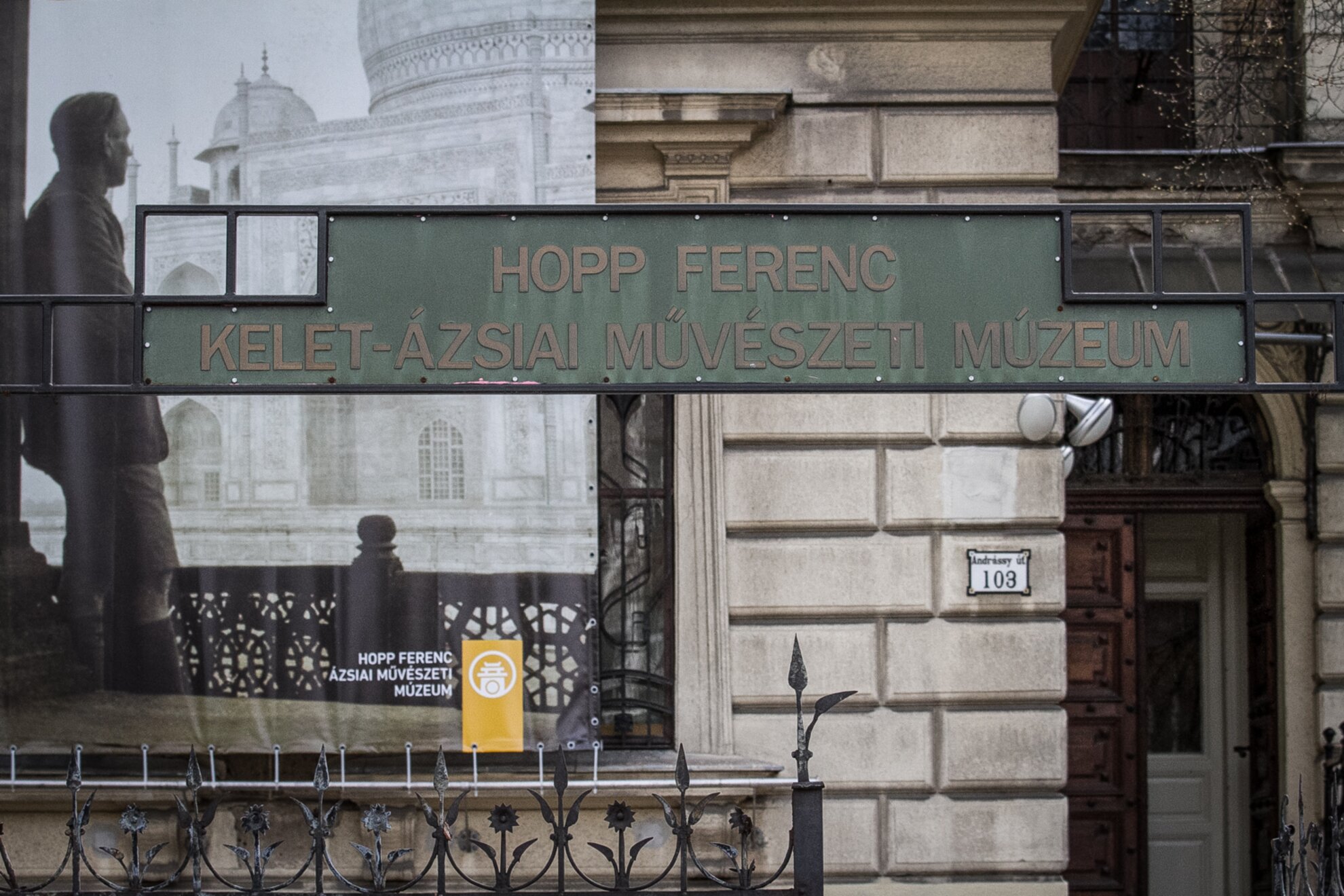Ferenc Hopp was born in the Moravian town of Fulnek, and moved to Pest during the 1850s; he started working as an apprentice optician and worked his way up to become the leader of a company. He took over the prominent Calderoni & Co., where, among many other things, they manufactured visual tools for schools and cameras.

As he became a man of wealth, he embarked on around-the-world journeys a total of five times between 1882 and 1914; usually his destination was East Asia, more precisely China and Japan, so a large part of his art collection originates from these two countries. He had a good eye for buying, and he donated many of his acquisitions to public collections; after his passing, his villa and its garden along with the valuable collection became the basis for Budapest’s East Asian art museum.

The museum’s garden, landscaped in an Oriental style, is on the Délibáb Street side of the museum, behind the villa. After being damaged in World War II, the area was left in bad shape for a long time before it was recently renovated. In this garden, styled after the botanical park of Buitenzorg in Java, we can admire a renowned stone turtle, the restored Jain shrine from India, and a statue of Brahma; the ceramic friezes and inscribed stone plates of the Moon Gate – which is the symbol of the museum – are from South China. According to plans, the villa will be renewed by 2019.

Stepping inside the building, a small reception area welcomes visitors, which also serves as the museum’s gift shop proffering a small selection of Asian-inspired merchandise, including books, yoga mats, and Oriental-style accessories. From this cozy hall, a winding stairway leads us up to the main display area upstairs, where visitors find an impressive collection of Asian treasures displayed across a maze of interconnecting viewing spaces.

The museum presents temporary exhibitions that are usually featured for a lengthy period of time, such as the current showcase – called “Nagas, Birds, Elephants” – that has recently been extended through August 20th. The collection provides a sneak peek into Oriental textile items by featuring a selection of fascinating fabrics and colorful outfits deriving from Southeast Asia, all presented from varied viewpoints including geographical, chronological, and anthropological perspectives, with each piece highlighting certain characteristics of the region. As a highlight of the exhibit, visitors to the museum are presented with unusual clothing made of tree bark, displayed along with a short documentary film that shows the process of how this truly natural outfit is made according to centuries-old traditions.

Besides the exhibitions, the museum regularly organizes thematic events, with their Japanese Days being the next program scheduled here on May 12-13. This two-day jamboree is happening in the museum’s garden to introduce Japanese culture and traditions to visitors with musical performances, martial-arts demonstrations, gastronomy programs, and various workshops. Entry to the event costs 800 forints per person for one day.

With all of the intriguing features that this semi-hidden cultural space has to offer, and thanks to its proximity to Heroes’ Square, the Ferenc Hopp Museum of Asiatic Arts is certainly worth visiting for those interested in Oriental artifacts and Asian-themed events.




